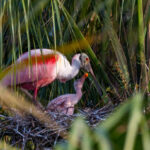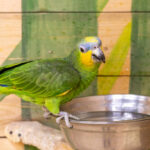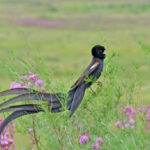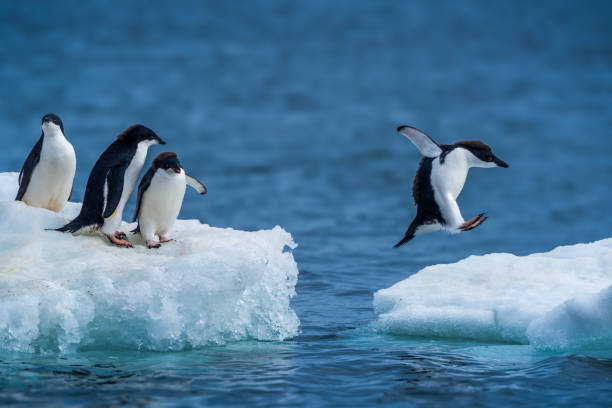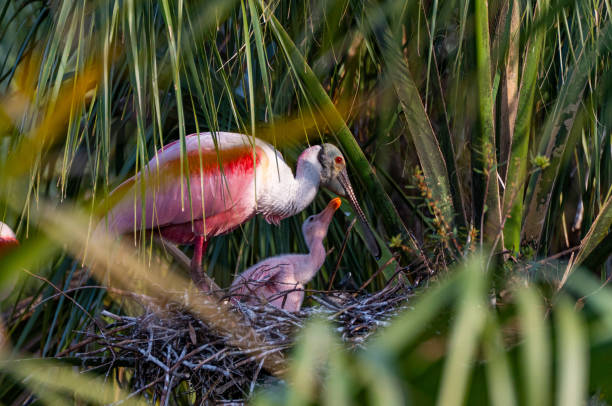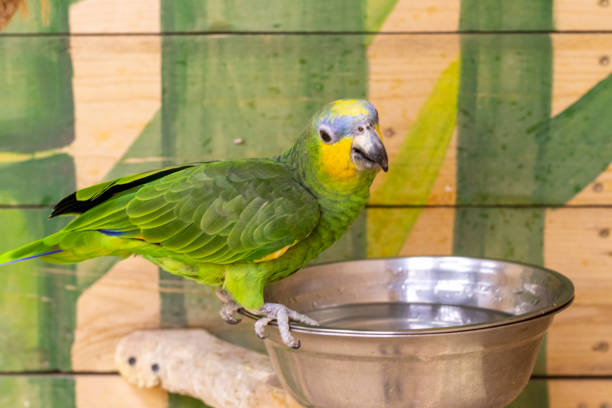We all think of birds flying high up in the sky, right? Flapping their wings and soaring around. But guess what? There’s a whole bunch of super cool birds out there that can’t fly at all! And get this – they’re doing just fine! In fact, some of them are the real kings and queens of the places where they live.
It might sound weird for a bird not to fly. Isn’t that, like, their main thing? Well, sometimes, not being able to fly can actually be a good thing. It lets these birds do other amazing stuff and become the top dogs (or top birds!) in their own special homes. In 2025, we know that nature is full of surprises, and these flightless wonders are definitely some of the most interesting!
So, get ready to meet some of the most awesome flightless birds that still rule their habitat. We’re going to see how they manage without wings and why they’re so good at being the boss in their own way!
Trading Wings for Other Cool Stuff: How Flightlessness Helps
You might be thinking, “How can a bird be in charge if it can’t even fly away from danger?” That’s a good question! But over a long, long time, these birds have changed in ways that make flying not so important anymore. Instead, they’ve gotten really good at other things that help them survive and even thrive where they live.
Think about it like this: if you don’t need to use your arms to fly, you can use them for other things, right? Well, for these birds, losing the ability to fly meant their bodies could change to be better at things like:
- Getting super big and strong: Big size can scare away enemies, and strong legs can help them fight or run really fast.
- Becoming amazing runners: If you can’t fly away from a lion, being able to sprint like crazy is a pretty good backup plan!
- Getting really good at swimming: For some birds, the ocean is where the food is, and wings that don’t fly in the air can be awesome for “flying” underwater!
- Developing super senses: If you’re walking around on the ground, being able to smell danger from far away or hear tiny movements can be a lifesaver.
So, even without wings that take them to the sky, these birds have found their own ways to be the rulers of their world! Let’s meet some of these amazing, earthbound bosses!
Meet the Kings and Queens of the Ground: Flightless Birds in Charge
Get ready to be surprised by just how cool and dominant these flightless birds can be! They might not soar through the air, but they definitely reign supreme in their own unique ways.
1. The Giant Boss of the Savanna: Ostrich (Africa)
When you think of a big bird that can’t fly, the Ostrich is probably the first one that pops into your head. And for good reason! These guys are the biggest living birds on the planet, and they are definitely the rulers of the open savannas and deserts of Africa.
How do they rule? Well, for starters, their size is a big deal. They can stand up to 9 feet tall, which is taller than most people! And those long, powerful legs? They’re not just for show. Ostriches can run faster than almost any other animal on two legs, reaching speeds of up to 70 kilometers per hour (that’s like 43 miles per hour!). That’s fast enough to outrun most predators that might want to mess with them.
Plus, ostriches are social birds. They often hang out in groups, which means there are more eyes to spot danger. And if a predator does get too close? Watch out for those powerful kicks! An ostrich kick can be strong enough to seriously hurt or even kill a lion. So yeah, they’re pretty much the giants in charge of their open, ground-level kingdom.
2. The Speedy King of the Outback: Emu (Australia)
Down in the vast landscapes of Australia, from the grassy plains to the thick woodlands, you’ll find the Emu, the second-largest bird in the world. Just like their African cousins, emus have traded flying for being super speedy on the ground.
Those long, strong legs can carry them across huge distances in search of food and water. They can hit speeds of up to 50 kilometers per hour (around 31 miles per hour), making them one of the fastest land animals. This speed helps them escape predators like dingoes.
Emus are also tough birds. They can handle the harsh Australian climate and are pretty good at finding food even when things get dry. And just like ostriches, if they need to defend themselves, those powerful legs can deliver some serious kicks. So, in the Australian outback, the emu is definitely a ruler of the land.
3. The Rainforest Heavyweight: Cassowary (New Guinea and Australia)
Now, let’s head over to the steamy rainforests of New Guinea and northeastern Australia to meet a bird that’s not just big, but also a bit intimidating – the Cassowary. With their tall, helmet-like thing on their head (called a casque) and their bright blue and red necks, they look like they mean business.
And they do! Cassowaries are the heavyweights of their forest homes. They have incredibly strong legs and long, razor-sharp claws. A kick from a cassowary can be seriously dangerous, even deadly. This makes predators think twice before trying to mess with them.
But cassowaries aren’t just tough guys. They also play a really important role in their rainforest homes. They eat a lot of fruit, and when they poop, they spread the seeds all over the forest, helping new trees to grow. So, these flightless giants are not only ruling their habitat but also helping to keep it healthy.
4. The Nighttime Boss of New Zealand: Kiwi (New Zealand)
Now for something a little different. In the unique forests of New Zealand, you’ll find the Kiwi. These little guys (well, some species can be pretty big!) are really special because they evolved in a place where there weren’t many land predators for a long time (before humans and other animals arrived). So, they didn’t really need to fly.
Instead of wings that work for flying, kiwis have tiny little stubs hidden under their shaggy feathers. But what they lack in flight, they make up for in other amazing abilities. They have a super strong sense of smell, which is really unusual for birds. They have long beaks with their nostrils at the very tip, which they use to sniff around in the forest floor for bugs and worms to eat.
Kiwis are also nocturnal, meaning they’re most active at night. Their strong legs help them move quietly through the undergrowth. They’re a national symbol of New Zealand and are perfectly adapted to ruling their little corner of the world, even without taking to the skies.
5. The Underwater Flyers of the South: Penguins (Antarctica and other Southern regions)
Okay, so maybe they can’t fly in the air, but Penguins are the absolute rulers of their watery homes! Found in the icy regions of Antarctica and other parts of the Southern Hemisphere, these flightless birds have turned their wings into super powerful flippers.
These flippers make them incredible swimmers and divers. They can zoom through the water with amazing speed and dive down to incredible depths to hunt for fish and krill. On land, they might waddle around a bit clumsily, but in the ocean, they are the undisputed masters.
Penguin colonies can be huge, with thousands of birds all ruling the coastal areas where they breed and raise their young. They are perfectly adapted to the harsh, cold environments they live in and are the top predators in their marine world.

6. The Speedy Ground King of South America: Rhea (South America)
Out on the wide-open grasslands of South America, like the pampas and savannas, you’ll find the Rhea. These big, flightless birds look a bit like smaller ostriches and are perfectly suited to their open environments.
Just like ostriches and emus, rheas have long, strong legs that make them excellent runners. They can reach speeds of up to 60 kilometers per hour (around 37 miles per hour) to escape predators like pumas and jaguars. Their good eyesight and hearing also help them stay safe in the open plains.
Rheas often live in groups, which helps them spot danger. And while they might not be as aggressive as ostriches or cassowaries, they can still defend themselves if they need to. In the vast grasslands of South America, the rhea is definitely a ground-level ruler.
7. The Swimming Boss of the Galapagos: Flightless Cormorant (Galapagos Islands)
Finally, let’s head to the unique Galapagos Islands to meet a bird that took a different path to ruling its habitat – the Flightless Cormorant. Unlike other cormorants that can fly, this special bird, found only on these islands, has lost its ability to take to the skies.
But this loss of flight has turned them into amazing swimmers and divers. With no natural land predators in their specific areas of the Galapagos, they could focus on becoming experts at finding food in the rich coastal waters. Their wings are now more like powerful flippers, allowing them to chase fish underwater with incredible skill.
These flightless cormorants are perfectly adapted to their marine environment and are the top hunters in their underwater world around the Galapagos Islands. They show how sometimes, losing a common ability can lead to becoming a specialist ruler in a different way.
No Wings, Still Winning: The Power of Adaptation
These amazing flightless birds show us that you don’t always need to fly to be a ruler. By adapting to their specific environments and developing other incredible abilities, they have managed to thrive and even dominate the places where they live. These birds show that evolution helps life thrive, even without flying. They do this with their size, speed, strong defenses, and unique senses. Some even master elements like water. They are a testament to the power and wonder of nature’s creativity!
Frequently Asked Questions (FAQs) About Flightless Birds That Rule:
Q: Why did these birds lose the ability to fly in the first place? A: Birds lose the ability to fly for various evolutionary reasons. Often, it’s because they live in environments where there aren’t many predators, so flying away for safety isn’t as important. They can focus on traits that help them survive on land or in water. For example, they might grow larger or develop stronger legs for running. They could also create flippers for swimming.
Q: Does being flightless make these birds more vulnerable to predators? A: It can, in some cases. However, many flightless birds have developed other defenses to compensate. Ostriches and emus can run incredibly fast. Cassowaries have dangerous claws. Penguins are agile in the water. The vulnerability depends on the specific bird and the predators in its habitat.
Q: Are there flightless birds on every continent? A: Yes, flightless birds can be found on various continents and in different environments. Ostriches live in Africa. Emus and cassowaries are found in Australia and New Guinea. Rheas roam South America. Penguins inhabit the Southern Hemisphere, including Antarctica. Kiwis are native to New Zealand.
Q: How do flightless birds travel long distances if they can’t fly? A: Flightless birds that live in open areas, like ostriches and emus, are often excellent runners and can cover large distances on foot in search of food and water. Penguins use their swimming abilities to travel long distances in the ocean.
Q: Do flightless birds build nests on the ground since they can’t fly to trees? A: Yes, flightless birds typically build their nests on the ground. The type of nest varies depending on the species, from simple scrapes in the earth to more elaborate structures made of vegetation.
Q: Are the wings of flightless birds completely gone? A: Not always. Some flightless birds, like kiwis, have very small, vestigial wings that are no longer used for flight. Penguins have wings that have evolved into powerful flippers for swimming. Ostriches and emus have wings that they use for balance while running and for display.
Q: Do flightless birds have different bone structures compared to flying birds? A: Yes, flightless birds often have denser, heavier bones compared to the light, hollow bones of flying birds. This helps provide stability and strength for running or swimming. They also lack the keeled sternum (breastbone) that anchors the large flight muscles in flying birds.
Q: Are there any flightless birds that are endangered or threatened? A: Sadly, many flightless birds are indeed endangered or threatened. This is often due to habitat loss and the introduction of non-native predators to their environments, which they are not adapted to defend against. Conservation efforts are crucial for the survival of many of these unique species.
Q: Can flightless birds live in a wide range of climates? Yes, flightless birds can survive in many climates. For example, ostriches live in hot deserts. Penguins thrive in the freezing cold of Antarctica. Kiwis make their home in the temperate forests of New Zealand.
Q: What can we learn from flightless birds about evolution and adaptation? A: Flightless birds provide valuable insights into how evolution works. Losing a trait, like flight, can help in some environments. This change allows for new adaptations that boost survival and success in specific niches. They highlight the fact that evolution is about adapting to the specific challenges and opportunities of an environment.
